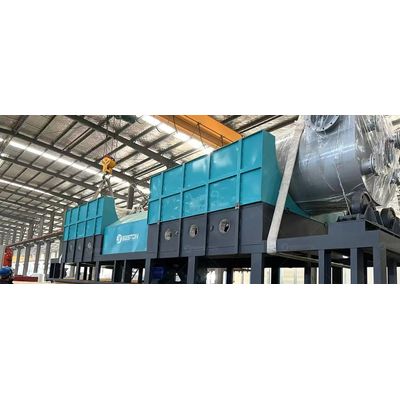

- Home
- Companies
- Beston Group Co., Ltd.
- Articles
- Investment Guide for Setting Up Sawdust ...

Investment Guide for Setting Up Sawdust Charcoal Making Machine
Establishing a production line with a sawdust charcoal making machine offers a profitable and sustainable business model. Driven by rising demand for clean energy alternatives and efficient biomass utilization, this sector attracts investors seeking high returns with moderate operational risk. To ensure viability, the investment must be strategically structured across key parameters including site selection, feedstock availability, process technology, and regulatory alignment.
Market Demand and Feedstock Economics
Sawdust, a byproduct of woodworking industries, represents an abundant and underutilized resource. When converted into biochar or charcoal via pyrolysis, it becomes a marketable fuel source with applications in metallurgy, agriculture, and domestic heating. The widespread use of charcoal in both industrial furnaces and soil amendment practices fuels consistent market demand.
A critical factor in project planning is the secured and long-term supply of raw material. Ideal investment regions include areas with dense timber processing clusters or consistent sawmill output. Proximity to feedstock not only reduces logistics costs but ensures operational continuity.
Technical Configuration and Capacity Planning
Choosing the right configuration of the sawdust charcoal making machine is essential for aligning capital expenditure with production goals. Machines are typically available in batch, semi-continuous, and fully continuous designs, each with distinct throughput rates, automation levels, and energy integration mechanisms.
Continuous systems offer higher capacity and energy reuse efficiency but require greater upfront investment and infrastructure. Batch systems are more suitable for small-scale entry-level operations or locations with constrained energy access. Modular designs allow for phased capacity expansion, reducing initial financial pressure while retaining scalability.
Advanced models incorporate flue gas recovery units, condensers, and tar filtration systems to enhance thermal efficiency and ensure compliance with emission standards. Integrating these systems can significantly improve profit margins by reusing generated syngas as process fuel and reducing fuel procurement costs.
Site Infrastructure and Utility Requirements
Site selection must consider logistics, utilities, and environmental compliance. A flat, well-drained site with access to water, three-phase electricity, and road infrastructure is ideal. Local policies regarding air discharge, land use zoning, and biomass processing should be reviewed to ensure the project qualifies for permits or tax incentives.
Space planning should accommodate raw material storage, carbonization area, post-processing zones (crushing, screening, packaging), and maintenance facilities. Fire safety installations and dust suppression systems are essential, given the flammable nature of sawdust and charcoal dust.
Economic Outlook and ROI Projection
Initial capital outlay includes machinery procurement, civil works, auxiliary equipment, installation, and commissioning. Operating costs encompass labor, electricity, water, maintenance, and packaging. Profitability hinges on machine yield efficiency, product pricing, and value-added downstream processing.
Charcoal derived from sawdust commands premium rates in export markets due to its uniformity and high calorific value. Value can be further enhanced by producing briquettes or biochar tailored for specific markets such as horticulture or barbecuing.
A well-optimized sawdust charcoal making machine setup can achieve payback within 12 to 24 months, depending on capacity and market price fluctuations.
Conclusion
Investing in a sawdust charcoal making machine offers a strategic entry into the bioenergy and resource recovery sector. With proper planning, reliable feedstock, and efficient system integration, the venture promises stable returns while contributing to environmental sustainability. Investors prepared to align technical execution with market intelligence will find this sector both resilient and growth-oriented.
